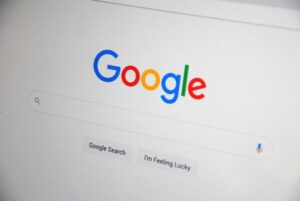Search Engine Marketing (SEM) stands as a cornerstone of effective online business strategy. This powerful approach combines both paid advertising (PPC) and organic search engine optimization (SEO) to maximize visibility in search engine results. While paid advertising allows businesses to secure prime positions through targeted ads, organic SEO focuses on building sustainable, long-term presence through content optimization and strategic website development.
The relevance of SEM has never been more pronounced than in today’s competitive digital marketplace. With over 90% of online experiences beginning with a search engine, businesses that fail to implement a robust SEM strategy risk becoming invisible to their potential customers. As consumer behavior continues to shift toward digital-first interactions, SEM provides the vital bridge between businesses and their target audience at the exact moment of interest or intent.

Table of Contents
Increases Brand Visibility
One of the most significant advantages of SEM is its ability to dramatically enhance your brand’s visibility across search engine results pages (SERPs). Through a well-executed SEM strategy, your business can secure multiple touchpoints on the same search results page – appearing in both paid advertisements at the top and organic listings below. This dual-presence approach creates a powerful multiplier effect, significantly increasing the likelihood of capturing user attention and clicks.
Moreover, consistent visibility in search results builds brand recognition and trust. When potential customers repeatedly see your brand name appearing for relevant searches, it reinforces your position as an industry authority. This visibility is particularly valuable when users are in the research phase of their buying journey, as multiple exposures to your brand can influence their final purchasing decision.
For local businesses, SEM offers enhanced visibility in location-specific searches, ensuring your brand appears prominently when potential customers in your area are looking for relevant products or services. This targeted visibility is especially crucial for users who are searching for solutions today. These “impatient” users are more likely to buy. Maybe they are looking for a gift, or maybe their problem requires urgent attention.
Data-Driven Decision Making
The power of SEM lies not just in its visibility benefits, but in its unparalleled ability to provide measurable, actionable data. Unlike traditional marketing methods, SEM offers comprehensive analytics that allow businesses to track every aspect of their marketing efforts in real-time. This wealth of data transforms marketing from a guessing game into a precise, strategic operation.
Through tracking tools, businesses can monitor key performance indicators (KPIs) such as:
- Click-through rates (CTR)
- Conversion rates
- Cost per click (CPC)
- Return on ad spend (ROAS)
- User behavior and engagement metrics
- Keyword performance
- Geographic response patterns
This detailed insight enables marketers to make informed decisions about their campaigns, continuously optimizing their approach based on actual user behavior and campaign performance. For instance, if data shows that certain keywords are driving more valuable traffic, budgets can be adjusted accordingly. Similarly, if particular geographic regions show stronger performance, targeting can be refined to maximize return on investment.
Perhaps most importantly, SEM’s data-driven nature allows for rapid testing and iteration. A/B testing of ad copy, landing pages, and calls-to-action provides concrete evidence of what resonates with your target audience, allowing for continuous improvement and refinement of your marketing strategy. Check our article for a deep dive on search engine advertising KPIs.
Cost Effective
Unlike traditional advertising methods that often require substantial upfront investments, SEM allows businesses of all sizes to participate with flexible budgets and precise control over their spending.
In the realm of paid search (PPC), you only pay when someone actually clicks on your ad, ensuring that your budget is spent on engaged potential customers. This pay-per-click model eliminates the waste associated with traditional advertising methods where you pay for exposure regardless of engagement. You can set daily budgets, adjust bids in real-time, and pause campaigns instantly, providing complete control over your marketing expenditure.
For organic SEO efforts, while the initial investment in content creation and optimization may be higher, the long-term benefits often prove highly cost-effective. Once your website achieves strong organic rankings, you can continue to attract traffic without the ongoing costs associated with paid advertising. This creates a sustainable, long-term marketing asset that continues to deliver value over time.
Key cost-effectiveness benefits include:
- Flexible budget management
- Pay-for-performance model in PPC
- Scalable campaigns based on results
- Long-term value from SEO investments
- Lower customer acquisition costs compared to traditional advertising
- Ability to adjust spending based on performance metrics
Targeted Reach
SEM stands out for its ability to reach precisely the right audience at the right time. Unlike broad-spectrum advertising, SEM allows businesses to connect with users who are actively searching for their products, services, or solutions, making it one of the most targeted forms of marketing available today.
Through sophisticated targeting options, you can refine your reach based on multiple parameters:
Keyword Intent Targeting
- Capture users at different stages of the buying journey
- Target informational, navigational, or transactional searches
- Adapt content and ads to match search intent
- Focus on high-value keywords that indicate purchase readiness
Geographic Targeting
- Focus on specific countries, regions, cities, or radius around locations
- Adjust bids based on location performance
- Target local customers for brick-and-mortar businesses
- Customize messaging for different geographic markets
Demographic and Device Targeting
- Focus on specific age groups, genders, or income levels
- Target users on different devices (mobile, desktop, tablet)
- Adjust bids based on device performance
- Customize landing pages for different user segments
Time and Schedule-Based Targeting
- Show ads during peak business hours
- Align campaigns with seasonal trends
- Adjust bids during high-converting time periods
- Schedule content publication for maximum impact
This precise targeting capability ensures that your marketing budget is spent reaching the most valuable potential customers, maximizing the return on your marketing investment. By using tools such as Google Trends, keywords can be identified early once they develop momentum. Depending if it is a short lived trend or a long-term development, the right SEM strategy can be applied.
Immediate and Long-Term Results
A distinctive advantages is the ability to deliver both immediate results and sustainable long-term benefits. This dual-timeline approach allows businesses to address both urgent marketing needs and strategic growth objectives simultaneously.
In the short term, paid search campaigns can generate immediate visibility and traffic. Within hours of launching a PPC campaign, your business can appear at the top of search results for targeted keywords, driving instant traffic to your website. This immediate impact is invaluable for time-sensitive promotions, product launches, or quickly establishing presence in competitive markets.
Meanwhile, organic SEO efforts build a foundation for long-term, sustainable growth. While SEO typically requires several months to show significant results, the benefits compound over time:
● Gradually improved search rankings
● Increasing organic traffic volume
● Enhanced credibility and authority
● Reduced dependence on paid advertising
● Growing content assets that continue to attract traffic
This complementary approach allows businesses to leverage immediate PPC results while simultaneously investing in SEO strategies that will deliver ongoing value. As organic rankings improve, companies can strategically reallocate some PPC budget to other marketing initiatives or more competitive keywords, creating an evolving, optimization-focused marketing ecosystem.
Competitive Edge
A sophisticated SEM strategy provides several distinct competitive advantages:
Market Intelligence
By analyzing search data, businesses gain valuable insights into consumer behavior, emerging trends, and competitive positioning. This intelligence allows for more informed strategic decisions and helps identify untapped market opportunities before competitors.
Agility and Adaptability
The real-time nature of SEM enables businesses to quickly pivot in response to market changes. Whether adjusting to seasonal trends, responding to competitor actions, or capitalizing on emerging opportunities, SEM provides the flexibility to rapidly evolve marketing strategies.
Barrier to Entry Creation
Consistent investment in SEO creates cumulative advantages that become increasingly difficult for competitors to overcome. As your website builds authority, content depth, and ranking strength, newer market entrants face a steeper climb to achieve comparable visibility.
Competitive Conquest
Strategic keyword targeting allows businesses to appear in searches for competitor names or products, providing opportunities to intercept potential customers during their consideration phase. This tactic is particularly effective when combined with compelling value propositions that highlight your competitive advantages.
Putting it All Together
A truly effective SEM strategy integrates both paid and organic approaches into a cohesive, data-driven marketing ecosystem. Rather than viewing PPC and SEO as separate initiatives, forward-thinking businesses leverage the synergies between these complementary approaches.

